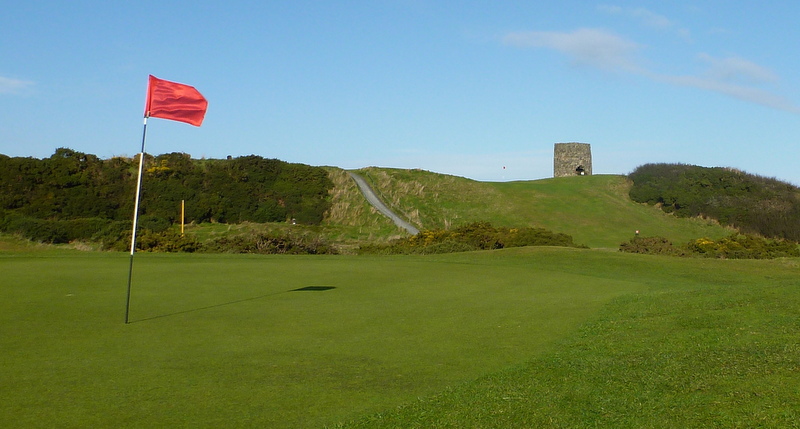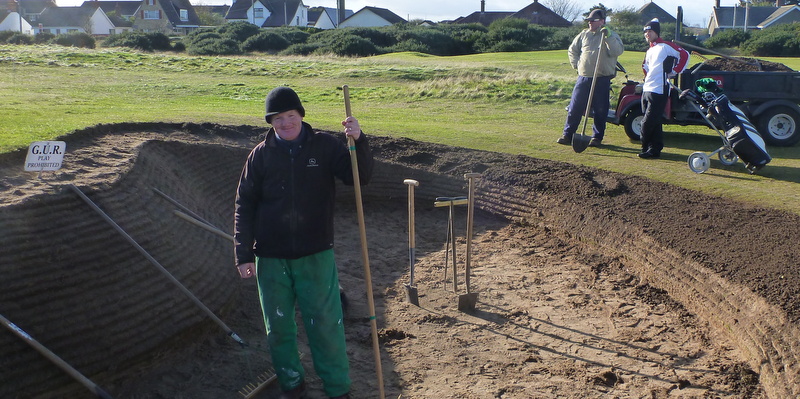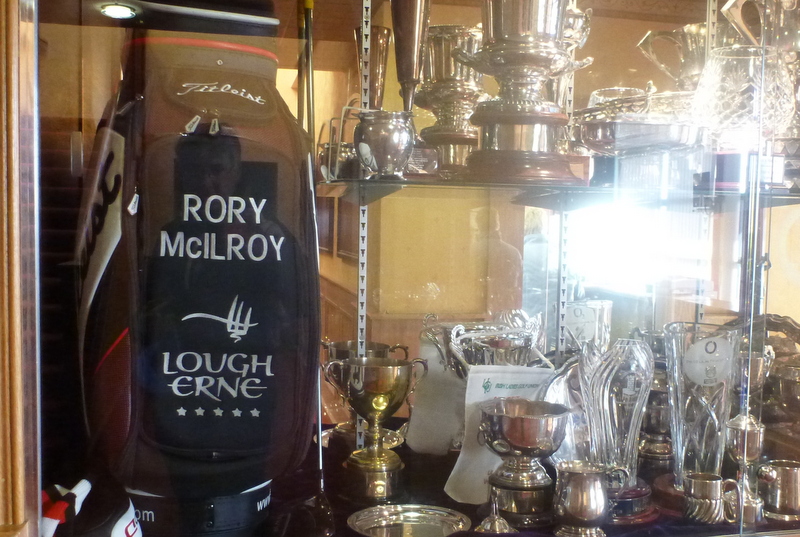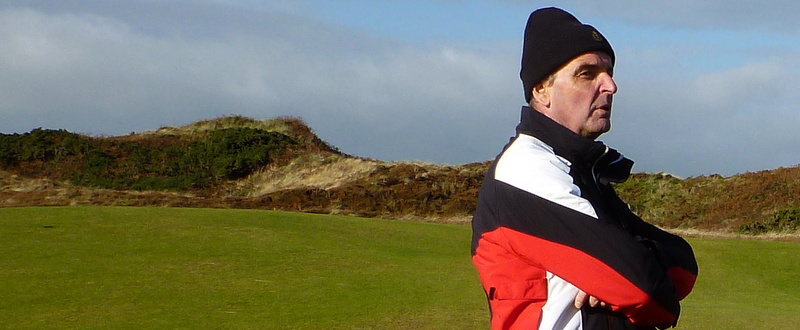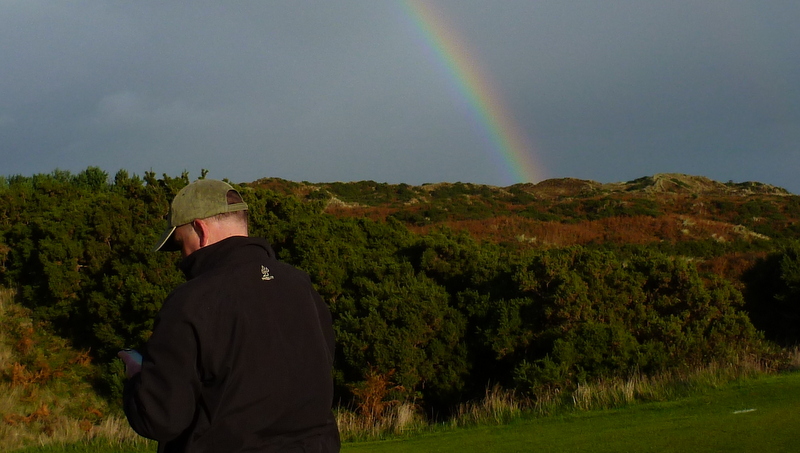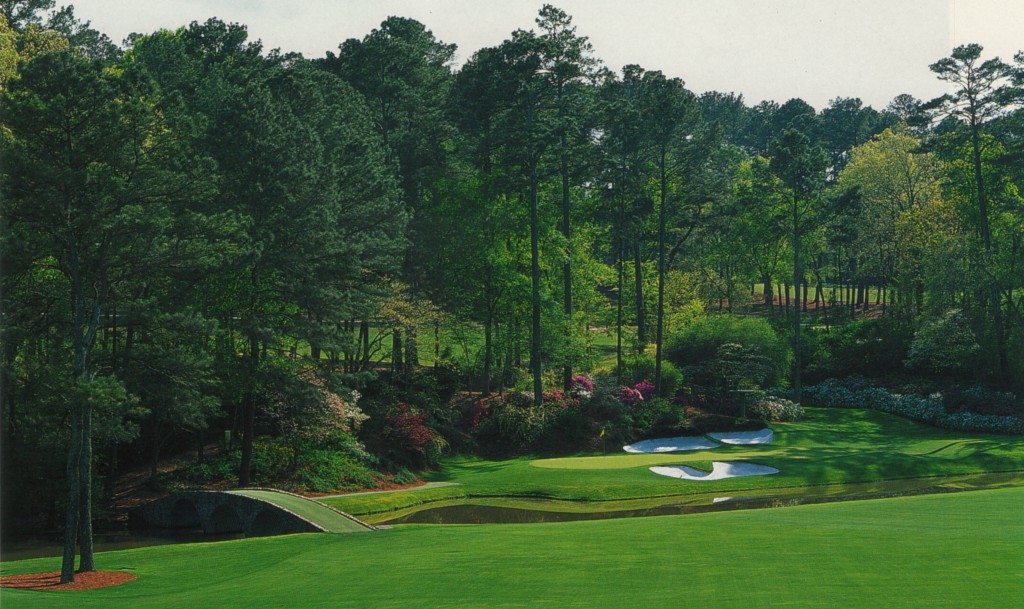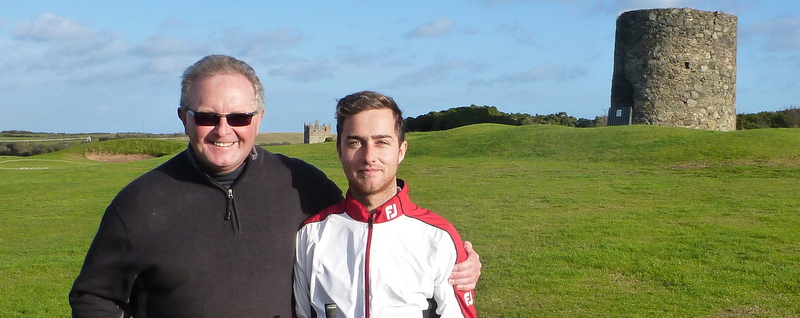 The mystery golf course in my previous entry is Kirkistown Castle, on the Ards Peninsula, in Northern Ireland. (Adam Heyes, who also identified Ardglass Golf Club, from photographs of some cannons and a life preserver, got Kirkistown right, too, but he let me know by email so that others would have a chance. Tralee wasn’t a terrible guess, but it credited me with the ability to teletransport myself and my golf clubs to the other side of Ireland and back.) I played Kirkistown last week with Kevin Gallagher and Jonny Breen, both members, shown above. You can see the ruins of the eponymous castle in the distance, between their heads. The structure on the right is the remains not of a castle but of an old tower windmill. It stands on one of the two sand hills that are the most conspicuous topographical features of Kirkistown:
The mystery golf course in my previous entry is Kirkistown Castle, on the Ards Peninsula, in Northern Ireland. (Adam Heyes, who also identified Ardglass Golf Club, from photographs of some cannons and a life preserver, got Kirkistown right, too, but he let me know by email so that others would have a chance. Tralee wasn’t a terrible guess, but it credited me with the ability to teletransport myself and my golf clubs to the other side of Ireland and back.) I played Kirkistown last week with Kevin Gallagher and Jonny Breen, both members, shown above. You can see the ruins of the eponymous castle in the distance, between their heads. The structure on the right is the remains not of a castle but of an old tower windmill. It stands on one of the two sand hills that are the most conspicuous topographical features of Kirkistown:
Kirkistown was founded in 1902, and the modern routing was created by James Braid in 1934. Among the few significant changes since then has been the sod-revetting of quite a few of the bunkers, a project undertaken with enthusiasm by the current greenkeeper, shown here in one of his ongoing creations:
To get to Kirkistown, I drove from Newcastle to Strangford, through an area that a road sign identified, correctly, as an Area of Outstanding Natural Beauty (A.O.N.B). There was also quite a lot of unnatural beauty, including this row of houses along the Strangford wharf:
I then had to cross Strangford Lough on a small ferry—which, naturally, was pulling away as I arrived:
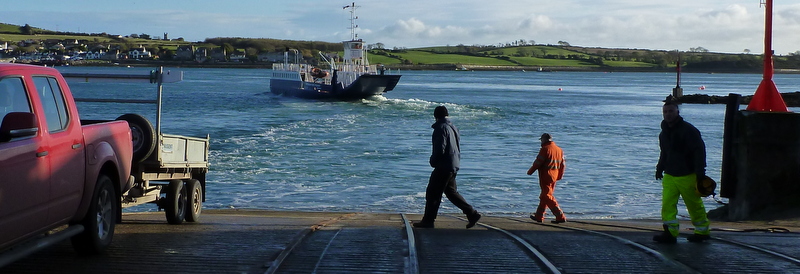 Small ferries are one of my favorite things in the world. I wrote about some even smaller ones in the Atlantic Monthly a long time ago. The Strangford ferry runs every thirty minutes, so I didn’t have to wait long for the next one. Here we are arriving at Portaferry, on the other side:
Small ferries are one of my favorite things in the world. I wrote about some even smaller ones in the Atlantic Monthly a long time ago. The Strangford ferry runs every thirty minutes, so I didn’t have to wait long for the next one. Here we are arriving at Portaferry, on the other side:
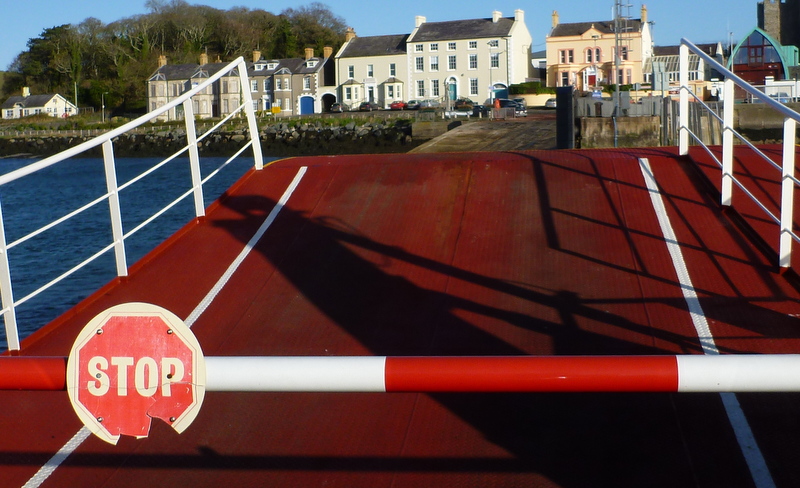 Kirkistown is just a few miles up the road from the ferry landing, on the other side of the peninsula. Rory McIlroy—who would have arrived from the opposite direction, since he grew up in a suburb of Belfast—played at Kirkistown often as a junior. A recent golf bag of his is displayed in the trophy case in the lobby of the clubhouse:
Kirkistown is just a few miles up the road from the ferry landing, on the other side of the peninsula. Rory McIlroy—who would have arrived from the opposite direction, since he grew up in a suburb of Belfast—played at Kirkistown often as a junior. A recent golf bag of his is displayed in the trophy case in the lobby of the clubhouse:
I intentionally took an unnessarily long way home, by doing a sort of figure-eight loop around the entire peninsula. The sun was gone by the time I got back to Portaferry—where, once again, I just missed the boat:
 I was in Northern Ireland mainly to write about Royal County Down for an upcoming issue of Golf Digest. The weather during my rounds there was mostly spectacular, too—much better than the weather at home:
I was in Northern Ireland mainly to write about Royal County Down for an upcoming issue of Golf Digest. The weather during my rounds there was mostly spectacular, too—much better than the weather at home:
 On my first day at Royal County Down, I played with Kevin Markham, who has played every eighteen-hole golf course in Ireland:
On my first day at Royal County Down, I played with Kevin Markham, who has played every eighteen-hole golf course in Ireland:
We were accompanied for nine holes by Kevan Whitson, the club’s longtime professional. (Nearly everyone I played golf with on this trip was named either Kevin, Kevan, or Johnny.)
I’ll have more to say about Royal County Down in the magazine—and here, too, probably. Toward the end of our round, I told Kevin I was never going to take another picture of a rainbow on a golf course, or anywhere else. But then I did.

